We asked Alex Dowsett if he'd rather draft a Dan Bigham-sized Miguel Indurain or a Miguel Indurain-sized Dan Bigham in a recent episode of the Performance Process podcast. The question really is, would you prefer to follow someone with Dan Bigham's low CdA and aero-optimised setup or Miguel Indurain's watt-fest? Both are seemingly daunting prospects, but if you had to pick, well...
Of course, with the benefit of some time to actually consider the question, it's obvious nobody would want to draft Miguel Indurain watts in a Dan Bigham aero package, so that question is a bit moot. But, nevertheless, the broader question still stands: what impact does your aero have on the rider behind, and is it easier to draft an aerodynamically optimised rider or someone with the aerodynamics of a brick?
More specifically, we all know that optimising a rider will help that rider go faster, but how does that optimisation affect the riders around them?
It's a fun question, logic dictates a brick-like rider is less aerodynamic or "draggier" and so produces more wake for the following rider to hide in, thus it must be easier to follow a less-aero rider. But aerodynamics are rarely straightforward, and one can never assume the seemingly obvious answer is accurate.
Sticking with that assumption for a second, though, if a brick-like rider is easier to follow, then surely the opposite is true of an aerodynamically optimised rider.
It's a question that first came to us from an Escape Collective member, and is one of those questions that the more you think about it, the more questions it poses. Like, what impact might the answer have in optimising lead-out trains or team pursuit squads, or wouldn't it be nice to know that improving a rider's aerodynamics not only makes that rider faster but also offers a double whammy effect of providing less draft to a following rider? But how would one even answer such a question with so many variables?
Well, thanks to the wizardry of modern technology, a.k .a. some WhatsApp messages and CFD simulations, we had the answer pretty quickly. Of course, many of these answers led to further questions, many of those we will delve into now.
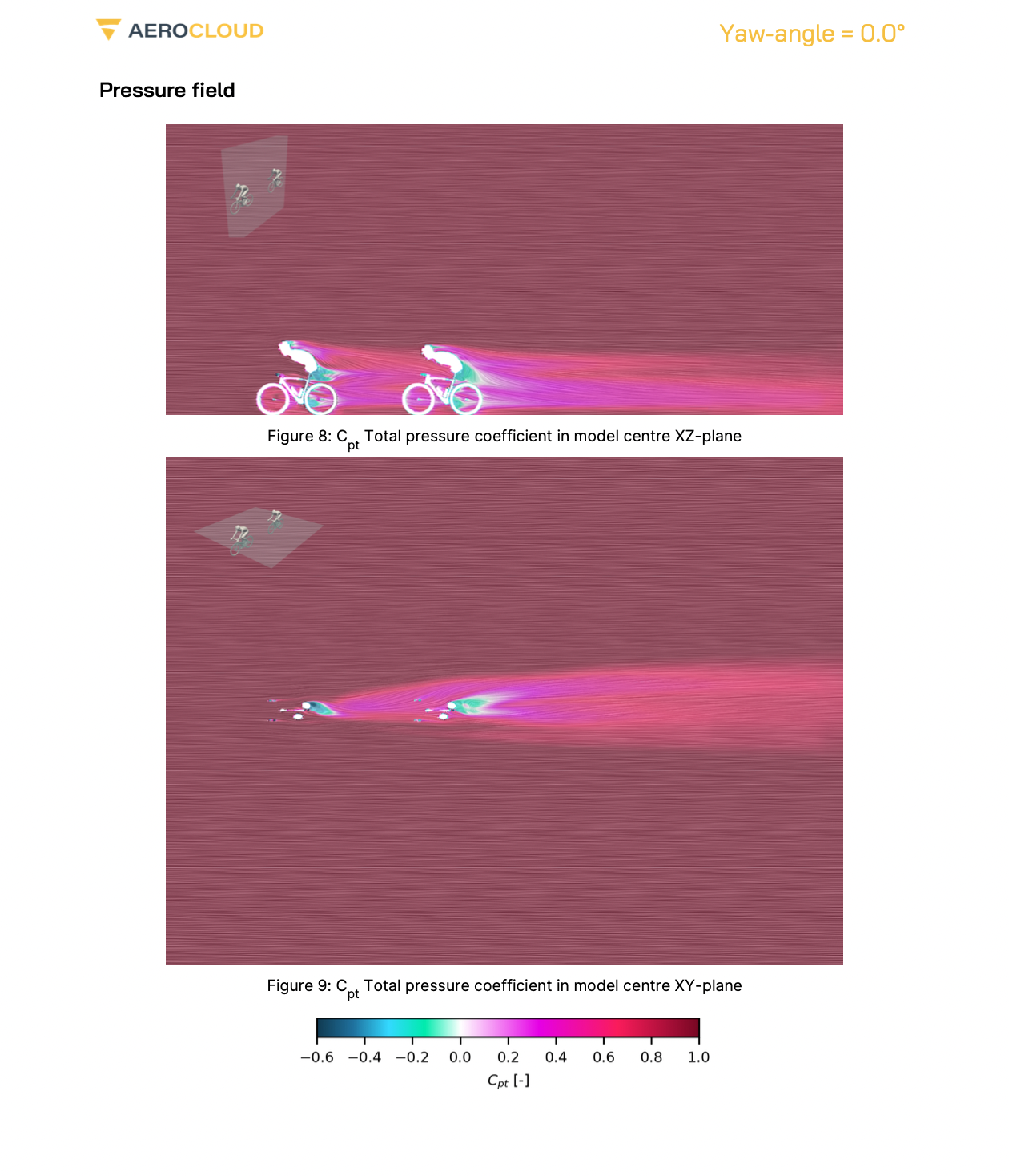
Surprising results on Big/Mig
Luca Oggiano is the CEO and co-founder of Nablaflow, the CFD simulation specialist who has developed the Aerocloud CFD simulation software used for everything from supercar development to Filippo Ganna's Hour Record aerodynamic optimisation.
I put the more accurate version of our Mig-sized Big or Big-sized Mig question to Oggiano and set him the challenge of investigating what impact a rider's own aerodynamic optimisation, or lack thereof, has on the draft effect said rider provides for others around them. The results certainly surprised me.
Now, we had the results within 24 hours or so, but CFD simulations are not cheap to run nor quick to setup; we just so happened to present Oggiano a question for which he already had the basic rider inputs loaded into the software. For our simulations, Oggiano took the same theoretical lead rider and altered said rider's CdA, .368 for the aero-optimised version of this rider and .374 for the more relaxed setup.
Furthermore, to simplify and accentuate any results and make them somewhat consumable, Oggiano only ran the simulation at zero degrees of yaw and high speeds 15m/s or 54 km/h (33.5 mi/h), think very high speed, e.g. sprint lead-outs or Hour Record attempts on the track. As Oggiano explains, this "very high speed-worst case scenario" setup should magnify any differences.
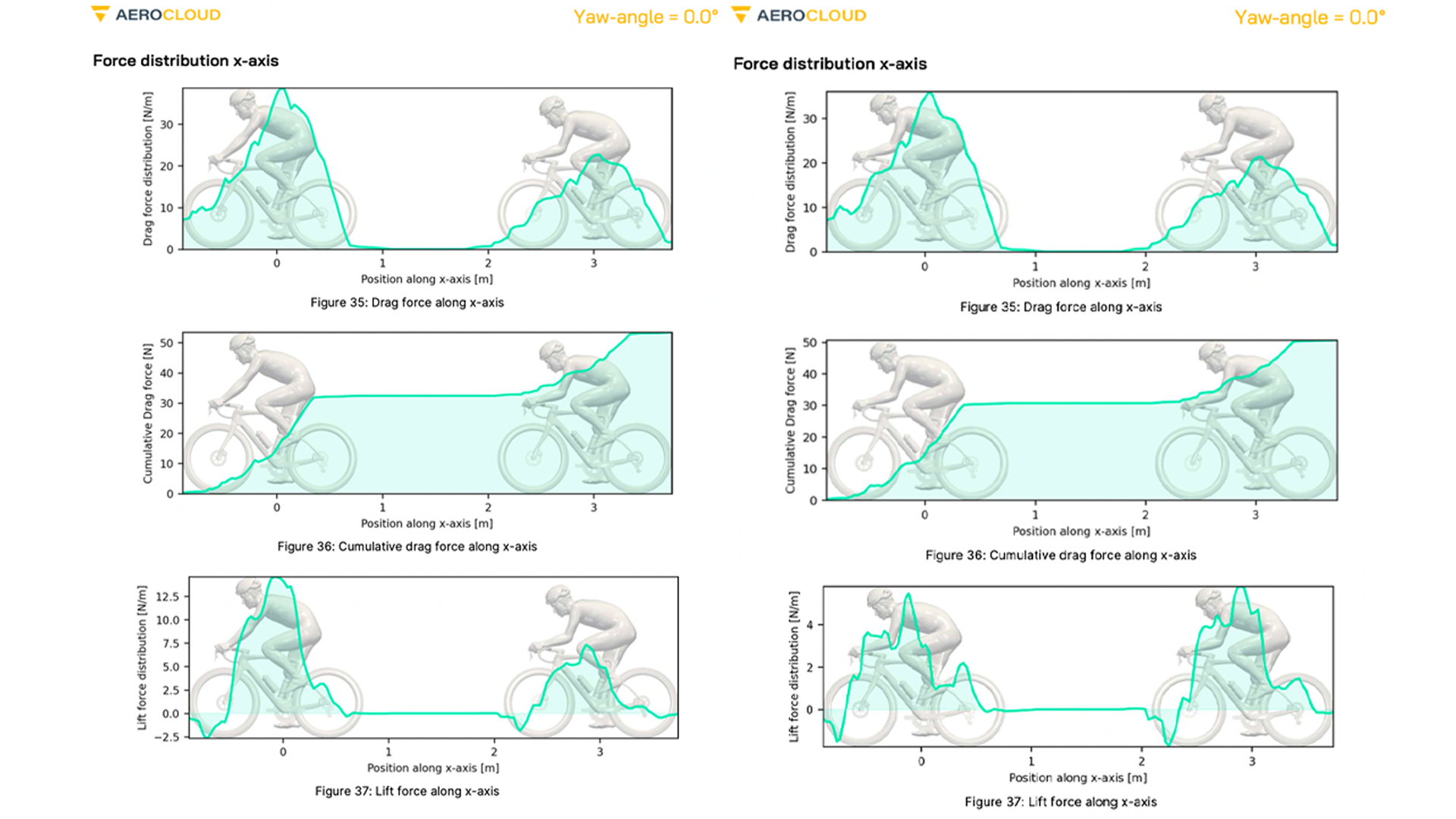
So what are the results? Well, believe it or not, having run simulations for a rider in an "aggressive" (aero-optimised) position and a "relaxed" (brick-like) position and both with the following rider drafting closely behind the lead rider and also at one metre further behind the lead rider, the CFD suggests it is actually marginally easier to follow a more aerodynamic rider in these conditions. I was expecting the draggier rider to be easier to follow, but apparently not.
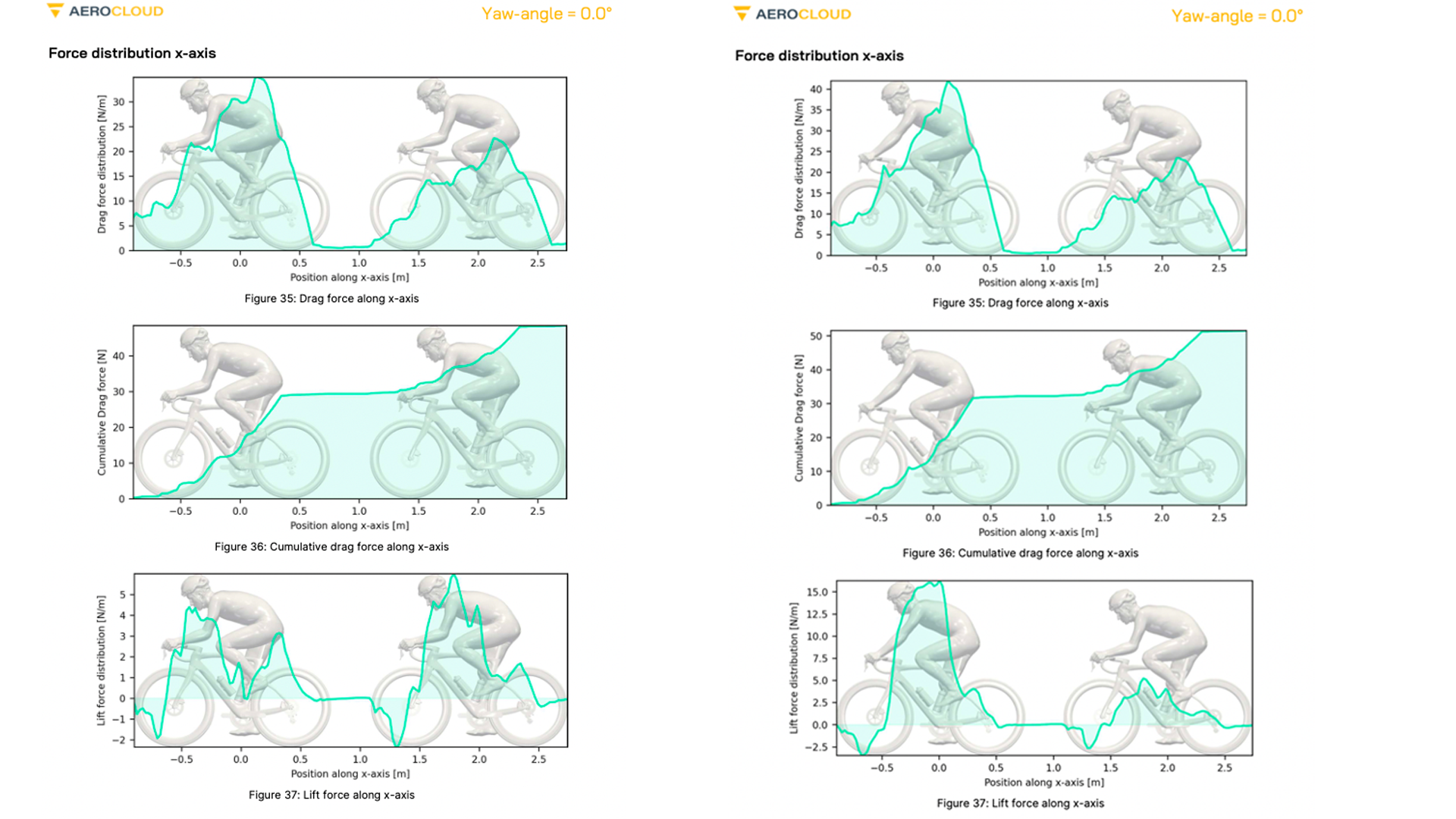
Putting some numbers to those results, when following closely behind a relaxed lead rider, the following rider was experiencing 19.39n of drag force versus 19.07n following closely behind an aerodynamic lead rider. For clarity, that's more drag force for the second rider in line following behind a less-aerodynamic version of the lead rider.
It's a similar result when measuring the riders with an additional one metre between the lead rider's rear wheel and the following rider's front wheel. In this simulation, the following rider experiences 20.07n of drag following the aerodynamic lead rider while following the same distance behind the draggier rider creates an additional .95n of drag for the second rider. Again, there is less drag for the following rider behind the same lead rider adopting an aerodynamic position versus the same lead rider adopting a more relaxed position.
In more familiar wattage numbers, the following rider saves 85 watts following the aero-optimised front rider versus 77 watt saving following the same rider with a higher CdA. If the following rider also improves their own aerodynamics, adopting an aerodynamic position, for example, these numbers increase to 92 watts and 79 watts saved following the same aero and un-aero lead rider. Seemingly no matter what way we split it, aero front / aero rear/ relaxed front / following closely or further back ... it's marginally easier to follow a more aerodynamic rider. Again, not the result I was expecting.
In fact, it's probably not the result anyone was expecting. Even Oggiano himself even with his vast experience in the aerodynamics space was pleasantly surprised. But to be fair, while he has run countless CFD simulations examining the impact of various team pursuit lineups and how best to optimise the team order, running a lead rider in the "relaxed position" is never a consideration in the team pursuit realm.
Having reviewed the results, Oggiano suggests "the lower gain is due to the core of the wake getting slightly redirected to the side and not hitting the following rider properly. This is due to the inherent 3D nature of wakes, and it could be less visible with another leg position or while pedalling."
Whatever the reason, it highlights both the beauty and complexity of aerodynamics.
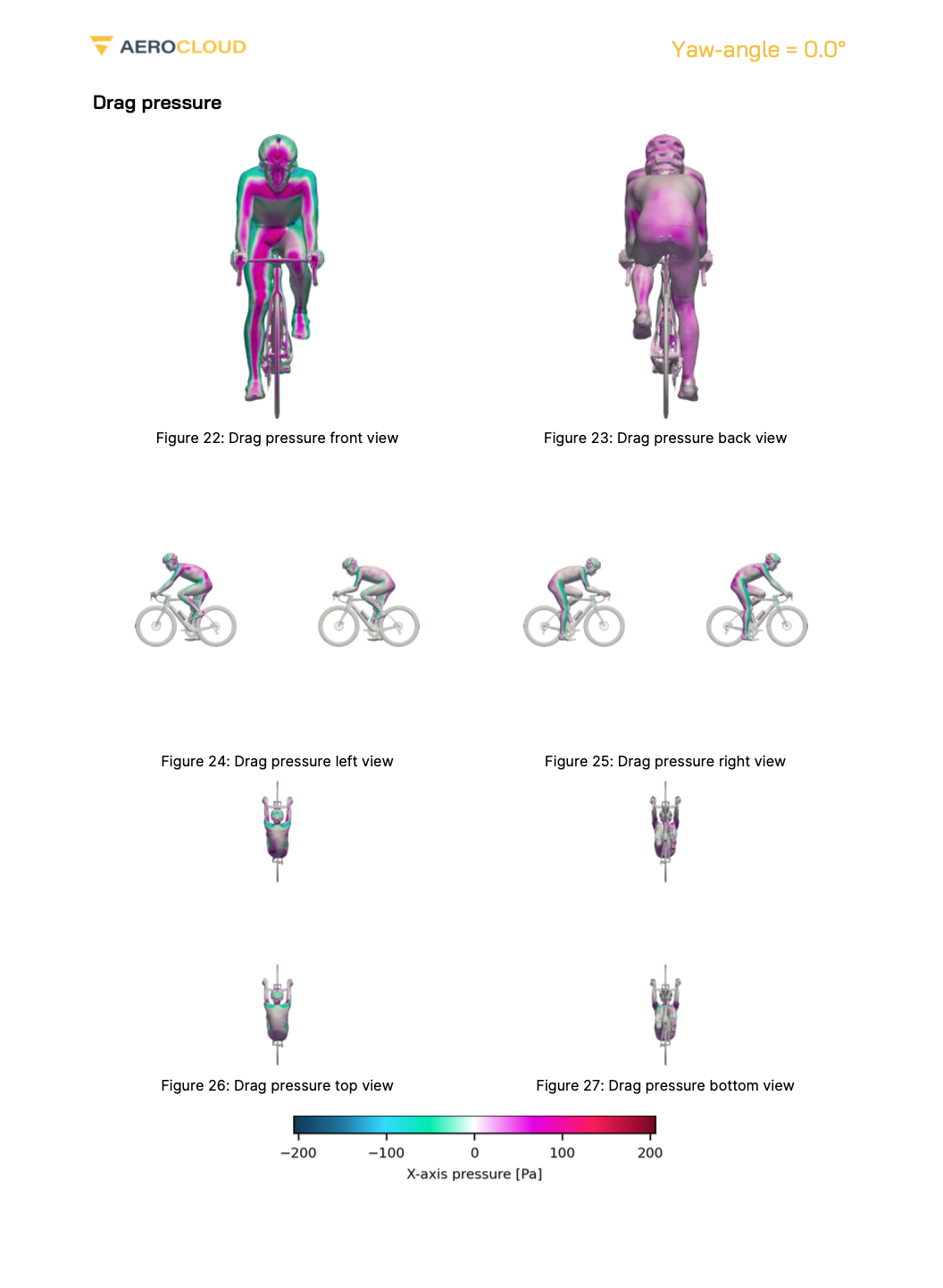
How does a drafting rider's aerodynamics affect the leader?
With that surprising answer, we asked Oggiano to go back to the CFD drawing board and simulate the effect for the lead rider of adjusting the following rider's CdA. To answer that question, we must first understand how many watts said lead rider requires riding solo with no following rider. In this scenario, the lead rider requires 239 watts in the aero position and 253 watts in the relaxed position.
Adding in a following rider and the same lead rider in the same aerodynamic position will save 4 watts if the rider following behind adopts an aerodynamic position, while this saving drops to 2 watts if the rider behind adopts a more relaxed position. Just like we seen in our previous simulations, one rider adopting an aerodynamic position actually aids the other rider, be they in front or behind. Understandably, the effect is smaller in this simulation as the position change is implemented on the following rider.
There is one exception, though. The results flip if the lead rider adopts the same "relaxed position" mentioned above. In this scenario, an aerodynamic following rider saves the front rider 4 watts, but this number balloons to a 10-watt saving if the following rider adopts a relaxed position. To be clear, a relaxed front rider and relaxed rear rider combine to equal a bigger saving for the lead rider from the rear rider, but the overall drag is still higher as both riders are less aerodynamic.
Oggiano suggests this could be because the wake from the aero lead rider "stays focused on the middle, so the gain (for the relaxed following rider) is larger." As Oggiano also points out, "the front rider also has a lower drag from this better position."
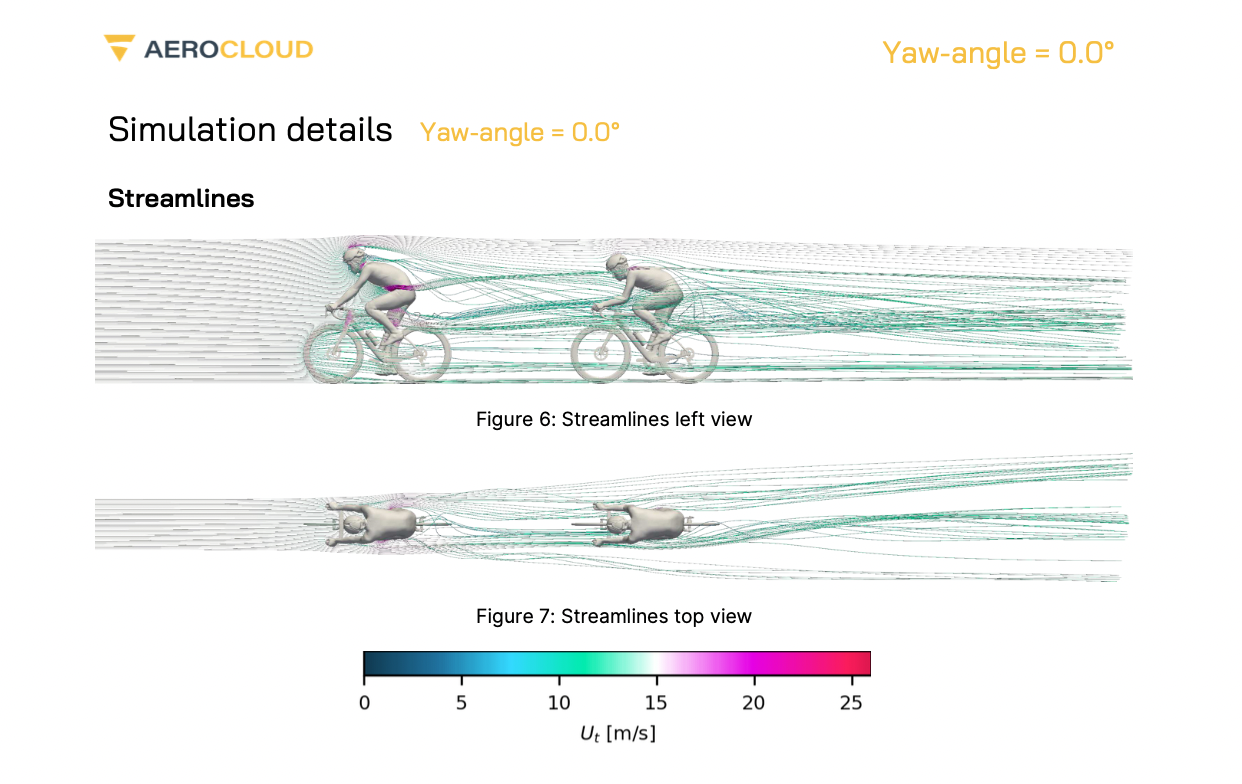
Whatever the savings or lack there of, one thing we can be sure of: aerodynamics are insane! As for what it all means and actionable takeaways, it seems the only thing we can be sure of is that getting closer to the rider in front of you is still the best thing you can do to increase the drafting effect and save a few extra watts.
Did we do a good job with this story?


